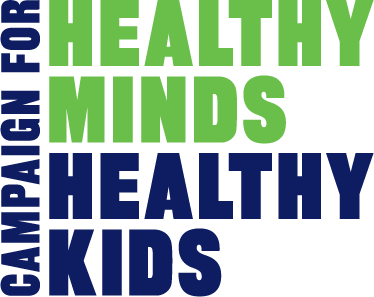State leaders must invest $200 million in children’s mental health!
New York children, youth and families are facing a crisis in accessing mental health and substance use disorder services. They are forced to wait months or even years for this desperately-needed care. As a result, parents are leaving their jobs so they can navigate the mental health system for their children; children are cycling in and out of ERs and hospitals; and young peoples’ needs are becoming more acute, complex, and difficult to address as they grow into adults.
To address the crisis, the Healthy Minds Healthy Kids Campaign is urging New York leaders to invest $195 million to address severe reimbursement rate challenges that have undermined the health care system’s ability to meet the behavioral health needs of children in the state.
Scroll To:
Mental Health Needs Aren't Met for Hundreds of Thousands of Children.
At the center of this crisis is a deeply-underfunded children’s outpatient system, which is preventing children and youth from accessing the preventive services they need.
A recent study by the Healthy Minds, Healthy Kids Campaign found that at most, 1 in 4 New York children covered by Medicaid are accessing the outpatient behavioral health (mental health and/or substance use disorder) services they need
3 in 4 New York State Children Who Need Behavioral Health Care Are Not Receiving Critical Services
The charts below illustrate the percent of children in New York State who need outpatient services but are not receiving them.
Outpatient Mental Health Clinics
121,788 children receiving care
442,131 eligible children who need care
Outpatient Substance Use Disorder Clinic
5,041 children receiving care
40,194 eligible children who need care
Children & Family Treatment and Support Services
23,753 children receiving care
200,000 eligible children who need care
Children’s Home and Community Based Services
12,065 children receiving care
65,000 eligible children who need care
Providers Are Forced To Turn Away New Patients
The underfunding of the system has created unacceptably long waitlists for services. To understand the depth of the waitlist crisis, HMHK conducted a survey in the Fall of 2024 of outpatient providers across the state.
In total, 43 providers offering a spectrum of services across New York state responded. These responses indicate striking and widespread waitlists and delays in care.
Waitlist Survey Results
of providers
have paused new intakes in the past 12 months
of providers
say they have waiting lists, or that it took at least 10 days from referral to appointment.
of providers said from referral to intake people wait on average
days or more.
Hearing From Families and Youth
In the fall of 2024, Families Together in New York State (FTNYS) in collaboration with the Citizens’ Committee for Children of New York, New York State Coalitions for Children’s Behavioral Health, and parents and youth co-developed a children’s mental health waitlist story survey.
Through this survey we wanted to hear directly from the community and spoke with 15 individuals from regions across NYS who shared their stories about barriers they faced in accessing mental health care for themselves or their child.
Below are some key insights and themes we identified from waitlist stories they shared.
Wait Time to Receive Regular Mental Health Services
Child's Mental Health Crisis Led To a 911 Call or Police Intervention
Distance Traveled (In Time) To Receive Mental Health Services
Read the Survey ResultsHow To Close the Gap
The resolution is simple. New York needs to invest money into its behavioral health system. HMHK is urging New York leaders to invest $195 million to address severe reimbursement rate challenges that have undermined the health care system’s ability to meet the behavioral health needs of children in the state.
HMHK based its budget proposal on a first-of-its-kind study of statewide data on public health insurance rates for outpatient behavioral health services and developed with input from children’s behavioral health providers and impacted families across the state.
Read the Proposal




